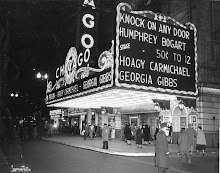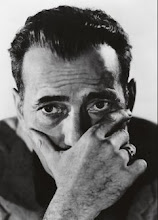I'm going to say this only once because I need to get it off my chest, then I promise I won’t mention it again.
I cannot understand those people who insist they will not watch a film if it's made in black and white. It doesn’t matter what it’s about or who’s in it – if it’s in black and white they are just not interested.
This inability to get past the lack of colour effectively closes them off to ninety five per cent of Hollywood’s output before 1960, including many of the all-time greats. “Citizen Kane”, “Casablanca”, and “On the Waterfront” all feature in the American Film Institute’s all-time top ten.
Black and white is not simply the absence of colour. In the hands of talented directors and cinematographers it’s an art form in its own right, using light and shade to create stunning compositions.
And among the thousands of films which would not be half as effective had they been shot in colour is a 1959 film noir drama called ODDS AGAINST TOMORROW.
I first saw this many years ago on late night tv, and it's stuck in my memory not only because of the gripping story and superb star performances, but also because of its' visuals. The combination of creative camerawork and stark black and white images are crucial to the film’s impact.
Ostensibly, the story is about a small town bank heist but the real focus is on two ill-matched members of the gang who are unable to get past their hatred for each other to work together effectively.
Robert Ryan is Earl Slater, a racist aging ex-con with a hair-trigger temper and a lifetime of bitterness over bad breaks etched into his face. “No one’s going to junk me like an old car” he snarls when his equally aging girlfriend Lorry (played by Shelley Winters) tries to talk him out of taking the job.
Harry Belafonte is Johnny Ingram, a musician and a drifter with a gambling habit and an ex-wife and young daughter. Unable to break his addiction to the horses, he’s deeply in debt to gangsters who are now threatening the lives of his estranged family.
Despite their mutual dislike both men see the bank raid as a final chance to find, in Slater’s words, the “hole in the fence” that everyone is looking for in life – the chance to change the course of fate.
Their lives are played out against the backdrop of an eerily bleak and silent New York City. Shot in the depths of winter Manhattan appears almost frozen, with the skyscrapers rising like giant tombstones in an enormous graveyard. There are cars and people on the streets but no sense of life. The air is so cold one can almost see it on the screen.
 Robert Ryan is simply magnificent. Because he never made a fuss about his work and rarely gave interviews he is often overlooked but the fact is that he’s one of the finest actors ever to grace the big screen. His success here is in making the nakedly hateful Slater such a compelling character.
Robert Ryan is simply magnificent. Because he never made a fuss about his work and rarely gave interviews he is often overlooked but the fact is that he’s one of the finest actors ever to grace the big screen. His success here is in making the nakedly hateful Slater such a compelling character.It says much about Harry Belafonte’s talent as an actor that he is able to hold his own against such powerful competition. Like Elvis, he had also found initial success as a singer before making the transition to films but unlike Presley he retained control of his career.
This allowed him to choose projects which required more than simply singing. Watching this film (which Belafonte’s company produced) with no prior knowledge of the man one would think he's an actor who could also sing when required.
ODDS AGAINST TOMORROW is film noir at its finest; its sense of impending doom so palpable it almost takes solid form alongside Slater and Ingram as the walking dead, their futures predetermined by their inability to seize control of their life in any positive way.
Powerful, haunting and a great example of black and white cinema at its best ODDS AGAINST TOMORROW is an essential part of any serious dvd collection. You can pick it up brand new for much less than $10. So buy it!



No comments:
Post a Comment